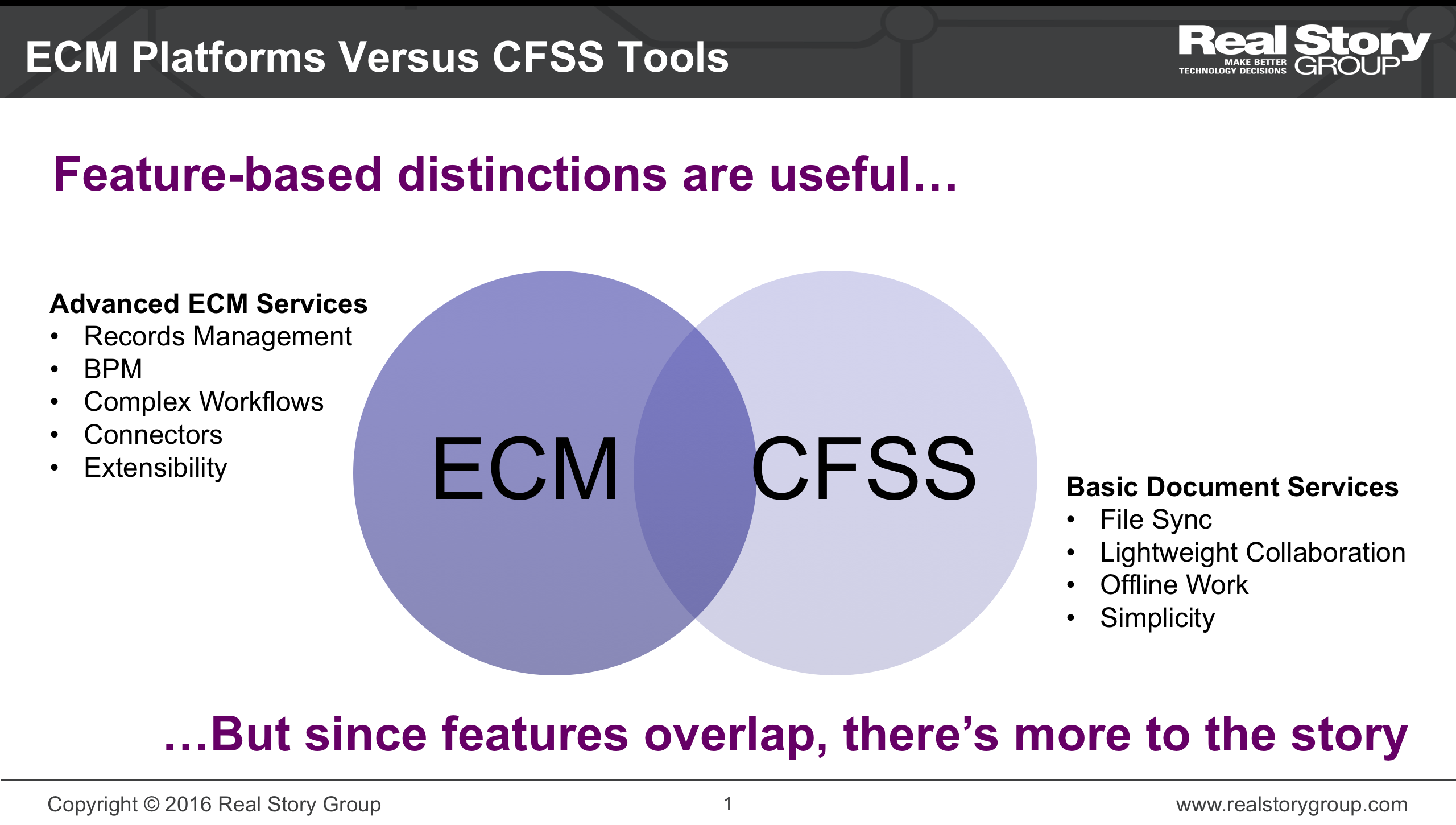When Do You Need ECM vs. Cloud File Sharing?
I often see customer shortlists that contain one or more cloud-based file sharing services along with one or more of traditional Enterprise Content Management (ECM) tools. Most often, at least one of them is in the wrong shortlist, but how do you distinguish between them?
Rise of CFSS
In the past few years, cloud-based file sharing and sync services (CFSS) have become quite popular. The rise of consumer-oriented services such as Dropbox and Google Drive is a testimony to their increasing popularity. These services are simple to use, usually require no up-front investment, run off a public cloud, and provide lightweight document and collaboration services. These tools provide useful services for file sharing, multi-device sync, and the ability to work offline using a cloud-centric deployment model.
Not surprisingly, many enterprises want to explore whether these relatively newer category of tools could obviate the need for heavyweight, complex Enterprise Content Management (ECM) platforms.
I can understand why, because from a services standpoint, the two segments definitely overlap, and indeed in RSG's research, we evaluate them according to the same criteria.

Scenarios to the Rescue
The reason for this overlap is that these CFSS vendors have started to build traditional Document Management (DM) capabilities like version control, while ECM and DM vendors have built or acquired cloud-based file-sharing, sync, and lightweight collaboration services.
Nevertheless, these two categories of tools tend to address different types of use-case scenarios. In particular:
- ECM vendors are more suitable for advanced and complex scenarios
- Stand-alone CFSS tools on the other hand make sense for many simpler scenarios
CFSS tools score better than full-fledged DM tools in terms of ease of use and the fact that you can get an implementation running without too much of system integration work. On the other hand, for scenarios that require complex Imaging or Forms management, archival, Records Management, Business Process Management (BPM), Case Management, or even complex Document Management, you will still likely need to rely on these traditional ECM platforms.
So, while features overlap, the two categories have different focus. Which is why, we recommend a Scenario-based selection methodology.
What Exactly Is an ECM Business Scenario?
Think of a business scenario as a high-level use case. In spite of what vendors claim, the fact remains that different types of products target different business use cases. This is usually because the product’s initial incubators or customers wanted it for those use cases. The product might have broadened its scope as it matured, but typically the initial roots remain quite visible.
For the ECM marketplace, we have identified these seven scenarios as a core evaluation criterion:
- Enterprise Content Platform
- Document Lifecycle Management
- Process and Case Management
- Cloud File Sharing and Sync
- High-Volume Imaging
- Information Governance
- Document-Centric Collaboration
What You Should Do
In your vendor evaluations, you should match vendor suitability to these scenarios. Though your needs may not reflect any single one of these precisely, it's likely you will find some resonance in one or two scenarios or in some hybrid combination of scenarios. But that itself is a very good starting point for a product selection exercise.
You could also employ RSG's multiple tools and detailed evaluations to help you with your own shortlist based on scenarios.
I'll encourage you to download a sample Alfresco evaluation chapter to see how we use scenarios to evaluate the "fitness" of each offering to your practical needs.






